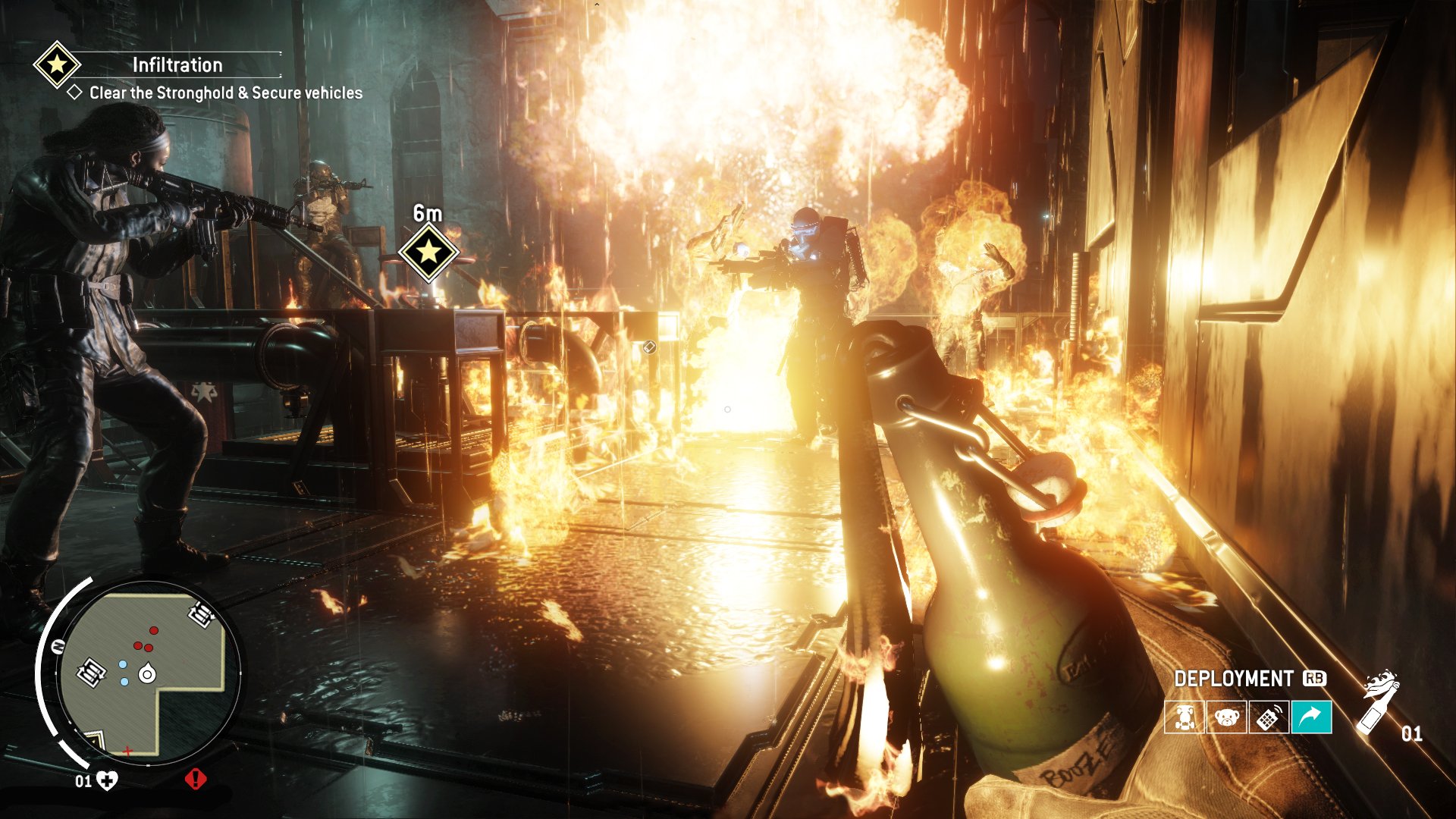Homefront: The Revolution co-op falls in line, but theres unrest brewing beneath
The first step for a game like Homefront: The Revolution is to escape the gravitational pull of doubt. That can’t happen until it’s been made tangible in the public view, an effort made even harder when the franchise comes from a deceased publisher (THQ) and has already once undergone a change in developers, with Crytek UK shuttering and sending many of its staff to current Homefront custodian, Dambuster Studios. It’s really coming out now and here’s the multiplayer beta to prove it, running on Xbox One from February 11 until February 14.
But Homefront’s Resistance Mode is, at first brush, a bit too effective at proving its existence as a contemporary, multiplayer shooter. Its co-op PvE mode is contemporary to the extreme, as if it had emerged from a Popular Video Game Metrics word cloud. Upgrades. Skills. Crafting. Customization. Loot. Except it’s in the rib-cage of a fallen Philadelphia this time, ruined by the armored squads and unmanned drones of North Korean invaders. So, a bit pulled from the headlines, provided you’re reading an alarmist tabloid at the time.

In this stage for guerilla warfare, you and up to three other players strike at the totalitarian regime in Resistance Mode (which is a companion to the game’s huge single-player component). Cautiously scurrying across large maps - big enough for a motrocycle to come in handy - and through forbidden Red Zones, your team hacks radar dishes, escorts stolen vehicles and defeats roving hit squads with the little ammunition you have. Homefront: The Revolution will come with 12 co-op, PvE missions when it launches this May, with more coming for free throughout the game’s first year.
You carry two weapons at a time, all of which can be augmented with different barrels and scopes you apply through a radial menu. You pick fallen soldiers, who look like they fell out of a Half-Life sequel we never got, clean of ammo. You collect junk to make improvised explosives or upgrades, and you earn XP to spend on various skills. When you earn money, you spend it on blind boxes that grant new weapons, boosters, and ammo, much like Halo 5’s REQ packs, Mass Effect’s item boxes and that other game’s thing that is the same as the thing in this game.
Homefront: The Revolution’s multiplayer finds its spark when it digs into what the game is about thematically - you and three other people, armed with homely DIY guns, being hopelessly outmatched in a sophisticated urban environment. You won’t be attacked constantly, but if you’re spotted illegally traversing a Red Zone, you’ll have to contend with heavily armored soldiers and automated tank drones. Some of these KPA soldiers can withstand a molotov cocktail or an incendiary shot to the face, so they’re not simply fodder. In fact, just one can down a teammate and threaten to topple the rest like dominoes. It can feel oppressive. Snipers in particular are reason enough to look up and feel paranoia. Thankfully, team planning can avoid them entirely or distract them with cobbled-together firecrackers.

The missions become extra calamitous if your team scatters to the winds, making it hard to quickly revive fallen comrades or help them deal with armored vehicles. But the city is an ally too: levels have plenty of spots to hide in and subterranean tunnels to crawl through. You can gain the upper hand by exploiting the city’s structures, as you’d expect from citizens who’ve lived there for years and congealed into a resistance.
The challenge will become more manageable as you upgrade your soldier with better weapons and armor, but that’s going back to the part of Homefront: The Resistance that feels ironically conformist. Admittedly, my beta play is a surface reading of what is clearly meant to be a long, rich game of attack runs, failures, teamwork, character building, and setting things on fire. It may not be unique, but it sure sounds like it’s giving the people what they want.
Weekly digests, tales from the communities you love, and more
Homefront: The Revolution will be available on May 17 in North America and May 20th elsewhere.
Ludwig Kietzmann is a veteran video game journalist and former U.S. Editor-in-Chief for GamesRadar+. Before he held that position, Ludwig worked for sites like Engadget and Joystiq, helping to craft news and feature coverage. Ludwig left journalism behind in 2016 and is now an editorial director at Assembly Media, helping to oversee editorial strategy and media relations for Xbox.



